Miranda: Probably The Strangest Of Uranus’ Moons
A. Sutherland – MessageToEagle.com – Five large moons and at least 22 small moons orbit Uranus, but probably the strangest of them is Miranda.
It is a small moon but its surface is really amazing. Miranda, which reveals a complex geologic history, is one of the strangest phenomena in our solar system.
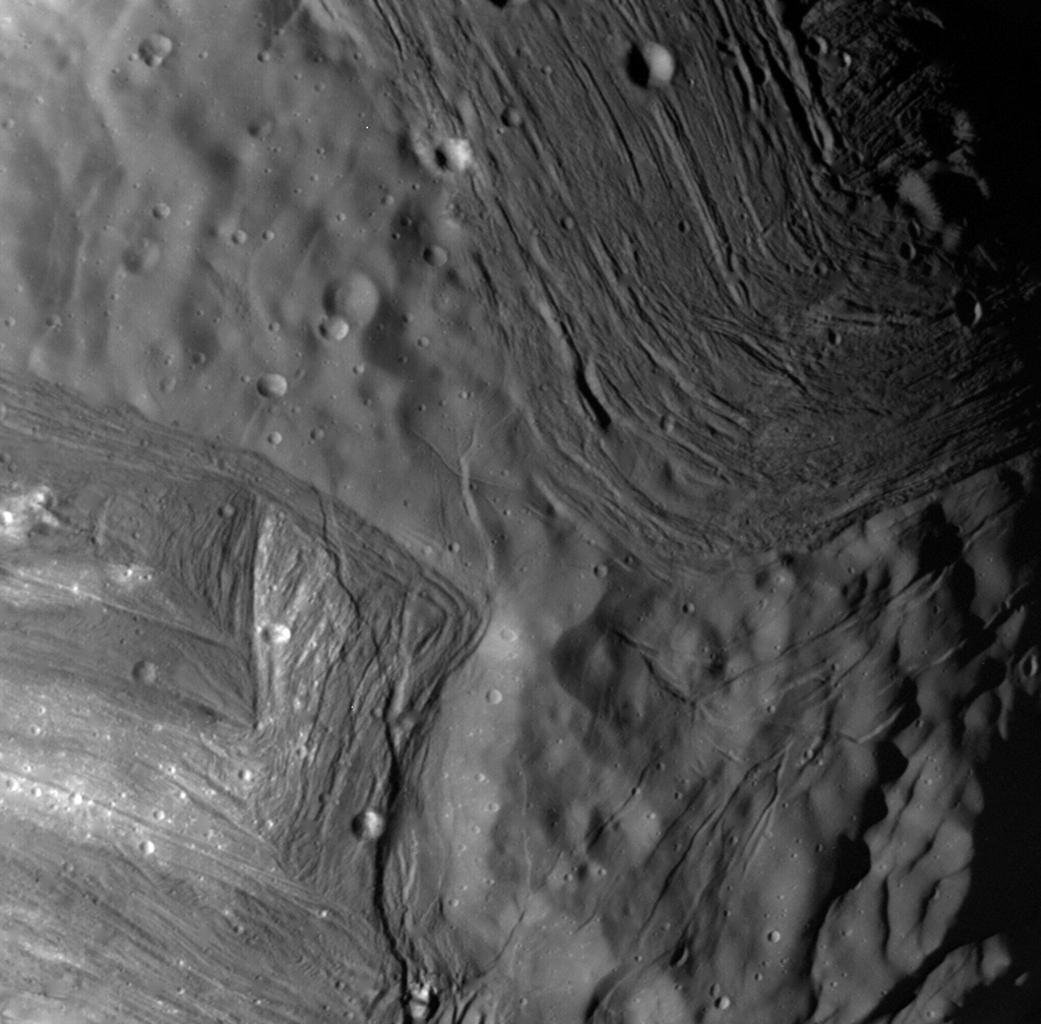
It has a distinctly differing terrain that looks almost like a patchwork of different landscapes.
In one place, Miranda can surprise us with a region full of craters (many 5 km (3 mi) wide), and suddenly, next to it, Miranda’s terrain changes and exhibits lots of massive mountain ridges.
There are also other surface features such as huge fault canyons as deep as 20 km (12 miles), terraced layers, an unusual ‘chevron’ figure and rolling plains.
But perhaps one of the most bizarre features of Miranda that clearly demonstrates its dramatic past is Verona Rupes – a bizarre cliff that it has been estimated to be from 5 to 10 kilometers (3 to 6 mi) high, which makes it the tallest known cliff in the Solar System.
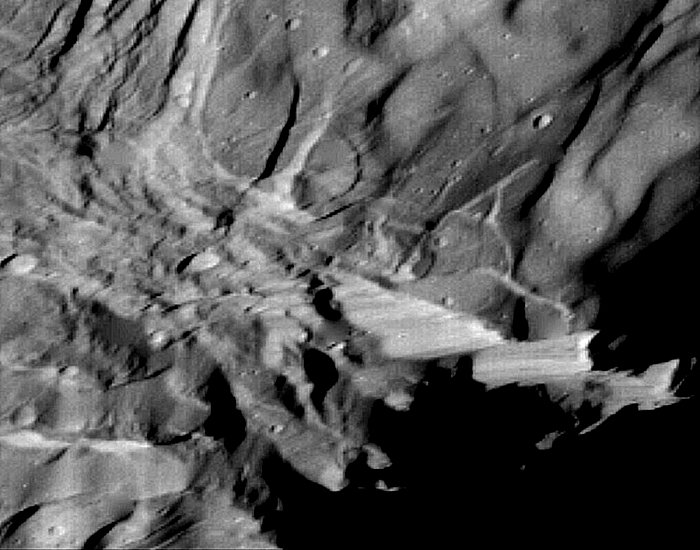
What did form Miranda’s dramatic surface?
It has been suggested that this mixture of different terrain types on older and younger surfaces was caused by a large diversity of tectonic activity. Violent impacts battered Miranda’s surface in the past, and tidal heating caused by Uranus’s gravitational pull.
See also:
Doomed Moons Of Uranus – Cupid And Belinda Are On Collision Course
Winds On Uranus And Neptune Can Reach Supersonic Speeds
Unique Extraterrestrial Aurora Photographed Another Wonder Of Our Solar System
Miranda – the smallest and innermost of Uranus’s five round satellites – was discovered as the last, in 1948 before Voyager 2 made its Uranus flyby and observed Miranda, which located closest to the planet.
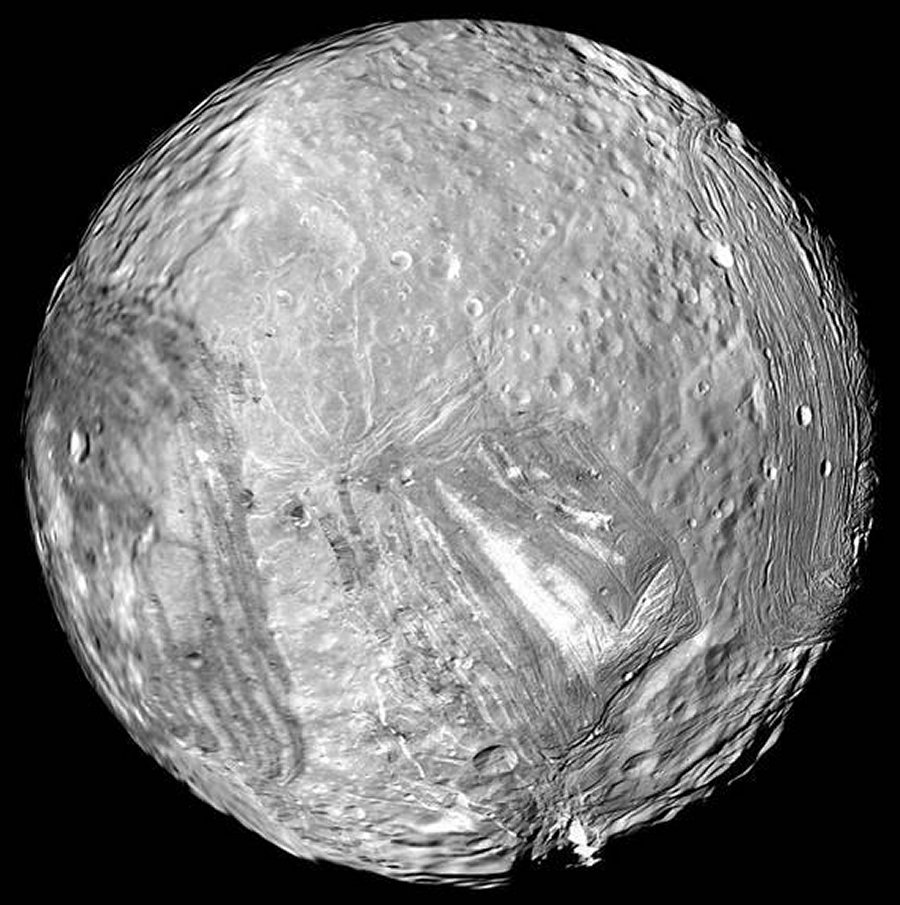
Until now, there is no sure explanation as to why Miranda’s surface looks like it does. One theory suggests that this moon must have been destroyed and then built up again thanks to gravity. But there is also another plausible theory, which suggests that a small Uranus’ moon, Ariel, and Miranda were once in “conflict” with each other, which made them both to be heated. When Miranda was heated up, some areas sank together and that is what we see today on its surface.
Some astronomers argued that Miranda was once crushed by collision with an asteroid but it managed to pull itself together again into a single body.
There is also another possibility that this moon froze when it was in a stage of its forming when rock masses were still sinking to Miranda’s interior and lighter chunks of ice were rising to the surface.
Written by A. Sutherland – MessageToEagle.com Senior Staff Writer
Copyright © MessageToEagle.com All rights reserved. This material may not be published, broadcast, rewritten or redistributed in whole or part without the express written permission of MessageToEagle.com
Expand for referencesRelated Posts
-
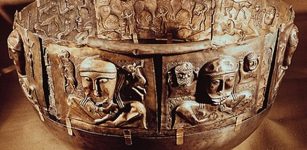 Gundestrup Cauldron: Great Gilded Silver Vessel Decorated With Scenes Derived From Celtic Mythology
No Comments | May 30, 2016
Gundestrup Cauldron: Great Gilded Silver Vessel Decorated With Scenes Derived From Celtic Mythology
No Comments | May 30, 2016 -
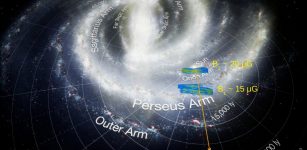 New 3D Map Of Magnetic Field In Two Clouds Toward Ursa Major – Created
No Comments | Mar 16, 2019
New 3D Map Of Magnetic Field In Two Clouds Toward Ursa Major – Created
No Comments | Mar 16, 2019 -
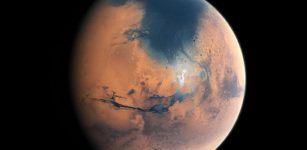 Oceans Of Mars Formed Earlier Than Once Thought
No Comments | Mar 22, 2018
Oceans Of Mars Formed Earlier Than Once Thought
No Comments | Mar 22, 2018 -
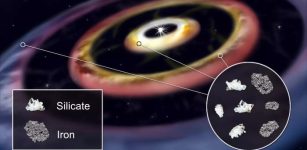 Three Iron Rings In A Planet-Forming Disk
No Comments | Jan 10, 2024
Three Iron Rings In A Planet-Forming Disk
No Comments | Jan 10, 2024 -
 New Einstein Cross Discovered – His Prediction Confirmed
No Comments | Mar 18, 2019
New Einstein Cross Discovered – His Prediction Confirmed
No Comments | Mar 18, 2019 -
 Babylonian Astronomers Used Geometry To Track Jupiter – 1,400 Years Before Europeans
No Comments | Jan 28, 2016
Babylonian Astronomers Used Geometry To Track Jupiter – 1,400 Years Before Europeans
No Comments | Jan 28, 2016 -
 The Bushido Code: Centuries-Old Unwritten Code For Ideal Samurai Warrior
No Comments | Dec 26, 2016
The Bushido Code: Centuries-Old Unwritten Code For Ideal Samurai Warrior
No Comments | Dec 26, 2016 -
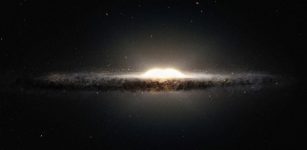 New Evidence How Milky Way Came Together And Merged With A Galaxy
No Comments | May 20, 2021
New Evidence How Milky Way Came Together And Merged With A Galaxy
No Comments | May 20, 2021 -
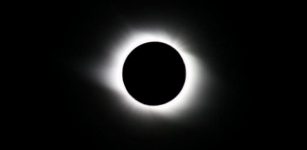 Great American Solar Eclipse Will Make Wild Animals And Pets Act Strangely – Scientists Say
No Comments | Aug 11, 2017
Great American Solar Eclipse Will Make Wild Animals And Pets Act Strangely – Scientists Say
No Comments | Aug 11, 2017 -
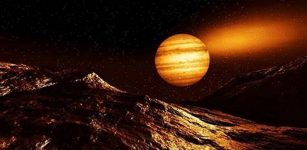 New Exoplanet Discovery Builds Better Understanding Of Planet Formation
No Comments | Aug 5, 2023
New Exoplanet Discovery Builds Better Understanding Of Planet Formation
No Comments | Aug 5, 2023
